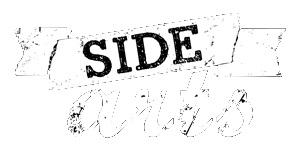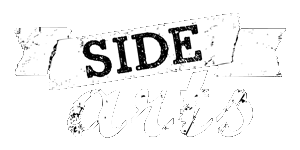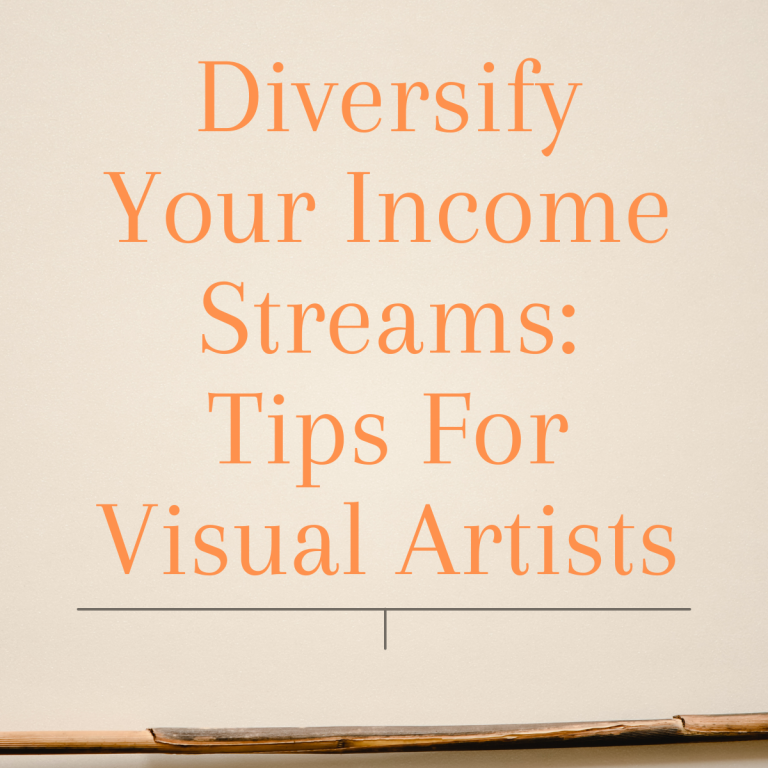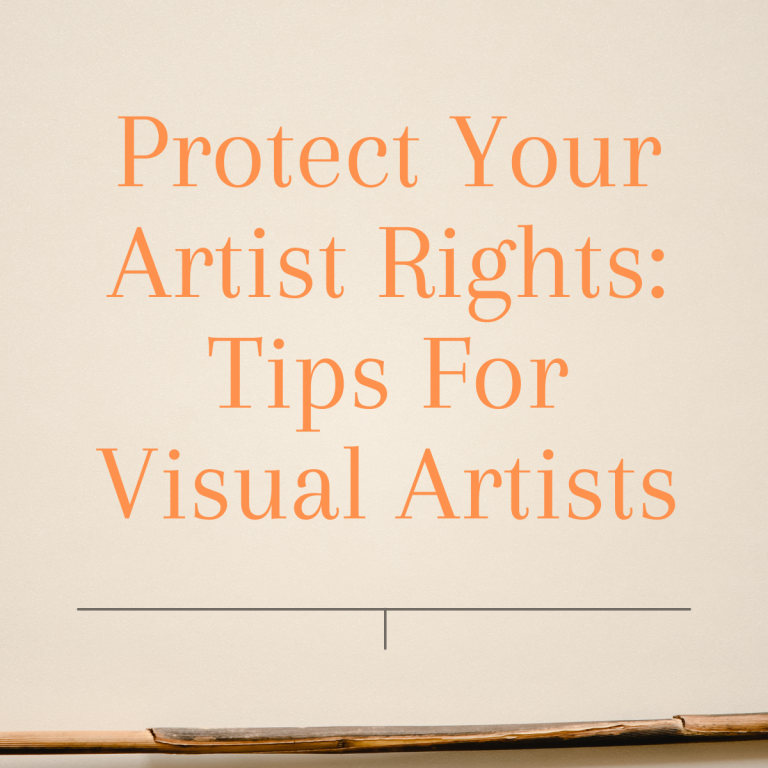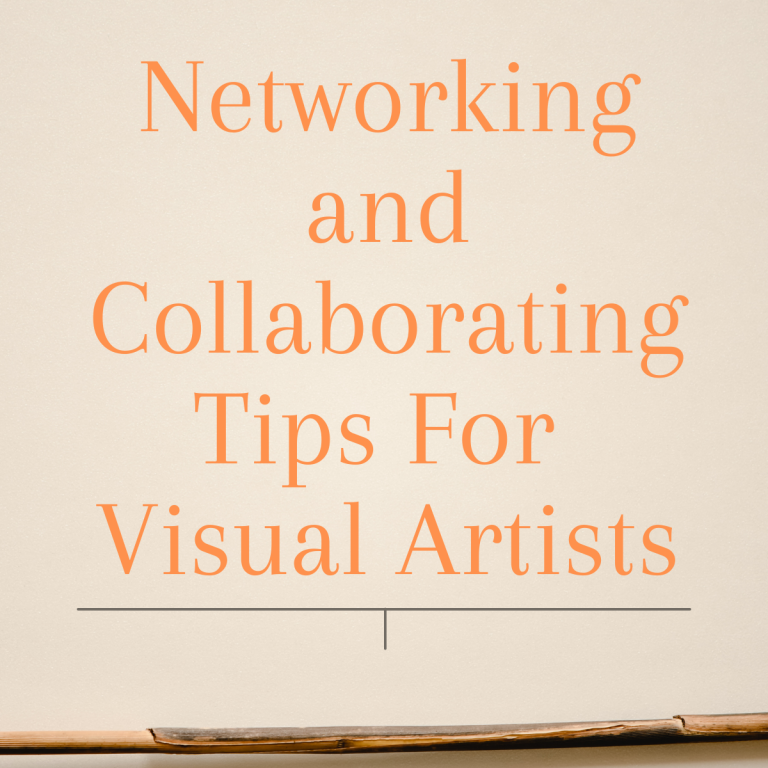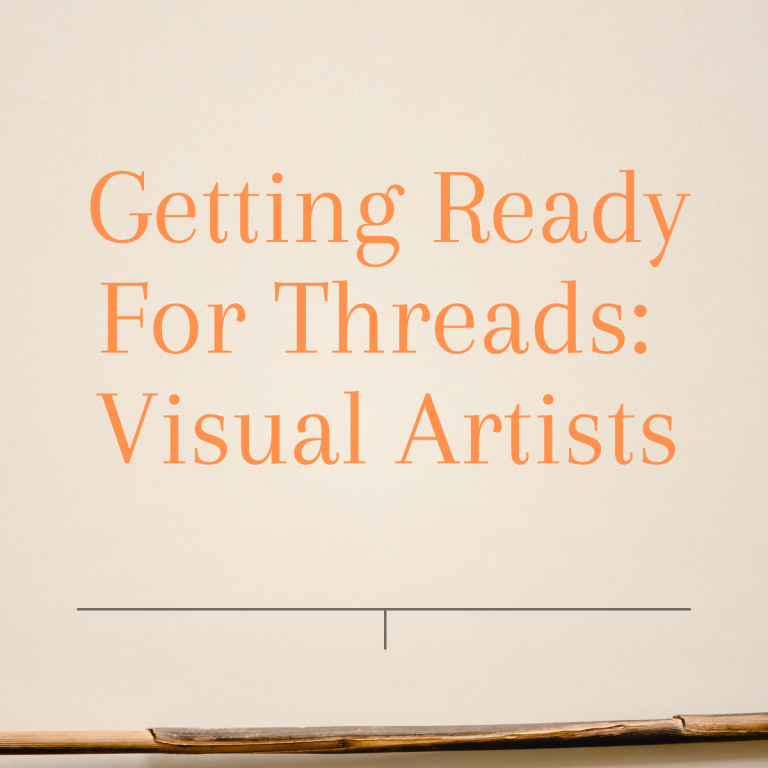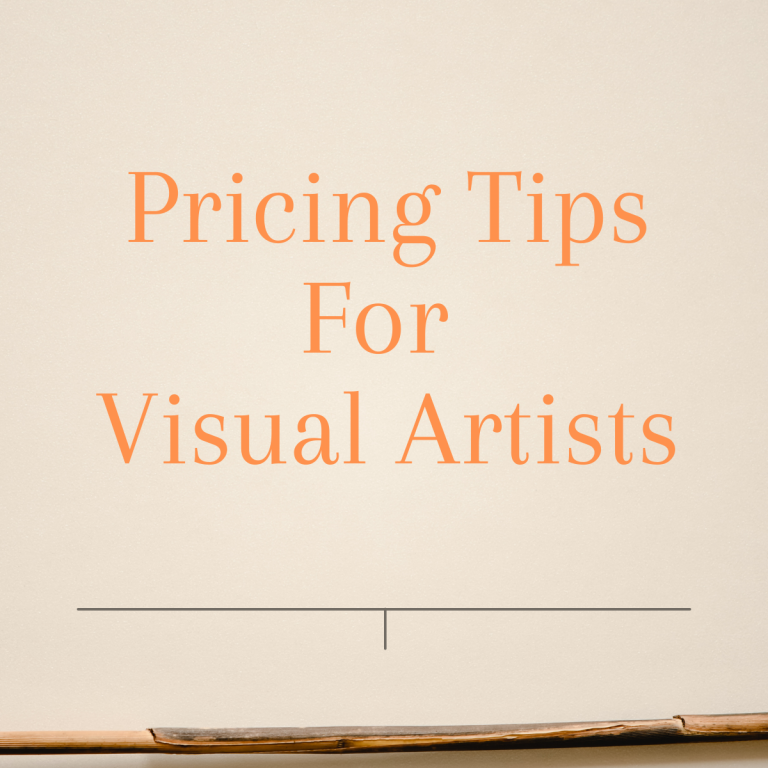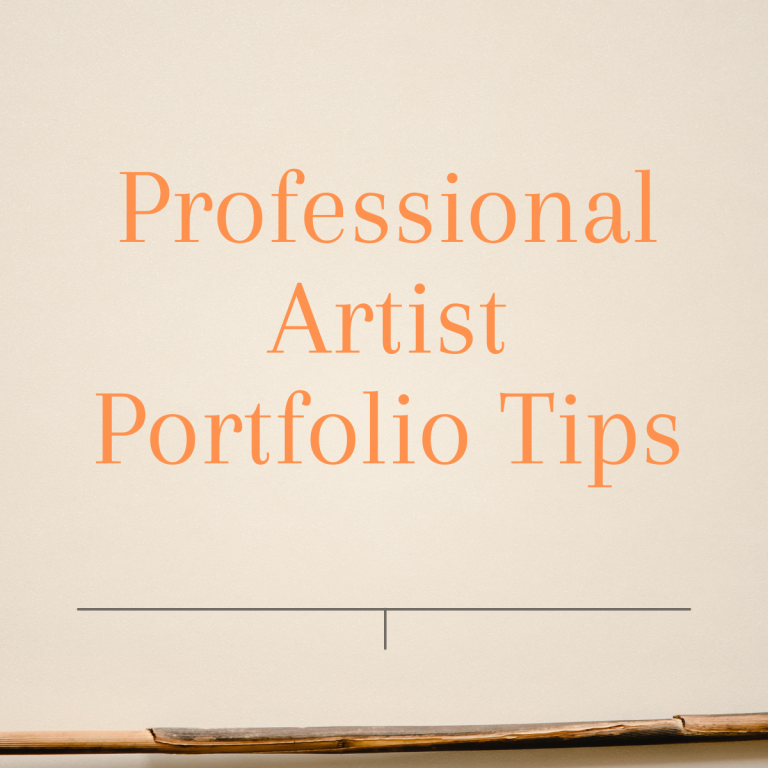For visual artists, the pursuit of creativity is intertwined with the pursuit of sustainability. Diversifying your income streams as an artist can provide financial stability while allowing you to focus on your artistic passions. In this blog post, we will delve into essential tips that empower visual artists to broaden their revenue sources. Moreover, we will unveil the potential of call for artists opportunities as a dynamic way to bolster your income while engaging in your artistic journey.
Diversify Your Income Streams and Embrace Call for Artists Opportunities
- Embrace Commissions and Custom Work: Offering commissioned pieces or custom artworks tailored to individual clients’ preferences can be a lucrative income stream. Collaborating with patrons allows you to create unique pieces while securing a steady flow of income.
- Teach Workshops and Art Classes: Share your expertise by hosting workshops or teaching art classes. Sharing your skills not only generates income but also nurtures a sense of community and mentorship among budding artists.
- Sell Prints and Merchandise: Transform your art into a range of merchandise, such as prints, posters, mugs, or apparel. These products can appeal to a broader audience and provide an ongoing revenue stream.
- Leverage Online Marketplaces: Join online art marketplaces and platforms that cater to artists. These platforms provide exposure to a global audience and facilitate the sale of your original artwork, prints, and other creations.
- Collaborate with Brands and Businesses: Forge partnerships with brands or local businesses for art-related collaborations. Your artwork can enhance their visual identity, and such collaborations often come with compensation.
- Licensing and Royalties: Explore licensing opportunities where your artwork can be used on products, books, or even in media. Licensing agreements can provide you with ongoing royalties from the use of your art.
- Participate in Art Fairs and Exhibitions: Participating in art fairs and exhibitions not only exposes your work to a wider audience but can also lead to direct sales and connections with potential buyers and collectors.
- Crowdfunding and Patreon: Platforms like Patreon allow you to receive support directly from your fans and patrons. Offer exclusive content or rewards in exchange for recurring contributions.
- Explore Public Art and Murals: If feasible, consider creating public art installations or murals. These projects not only contribute to the community but can also provide substantial compensation.
- Call for Artists Opportunities: Maximize your income potential by tapping into call for artists opportunities. Platforms like Side Arts promote juried exhibitions that not only showcase your work but also offer compensation for selected artists. These opportunities align perfectly with your artistic journey while providing a financial boost.
Conclusion
Diversifying your income streams is a strategic approach that empowers visual artists to cultivate financial stability while nurturing their creative passions. Embrace a multifaceted approach that encompasses commissions, teaching, merchandise, collaborations, licensing, and more. Moreover, “call for artists” opportunities, exemplified by Side Arts, are a dynamic pathway to augmenting your income while engaging in curated exhibitions that value your creativity and dedication. By implementing these tips and embracing diverse income streams, you can chart a sustainable course for your artistic career, ensuring that your creative journey remains both fulfilling and prosperous.
Next Step
Are you ready to showcase your artwork? Apply to become represented by Side Arts, a leading platform connecting artists with exhibition opportunities. With limited capacity and a rigorous jury review, Side Arts ensures that your work gets the attention it deserves. Click here to learn more about how Side Arts can elevate your art career and provide you with exciting opportunities to display your talent to a wider audience.
Take the leap and step into a world of endless possibilities for your artistic journey with Side Arts. Don’t miss out on this incredible chance to share your passion and creativity with the world. Apply now and open doors to a bright future as a recognized visual artist.
Click here to apply
...
In the realm of visual arts, creativity knows no bounds; however, as a visual artist, it’s crucial to understand and protect your rights to ensure that your creative endeavors are respected and valued. In this blog post, we will delve into essential tips for visual artists to safeguard their artist rights and preserve the integrity of their work. Moreover, we’ll introduce call for artists opportunities that not only provide exposure but also uphold your rights as an artist.
Protect Your Artist Rights: Essential Tips for Visual Artists
- Understand Copyright and Licensing: Educate yourself about copyright laws and licensing agreements. Copyright gives you exclusive rights to your original works, allowing you to control how they are used, reproduced, and distributed. Utilize licenses to grant specific permissions to others while retaining your rights. Be cautious when granting licenses and ensure they align with your artistic vision and intentions.
- Keep Detailed Records: Maintain records of your creative process, including sketches, drafts, and notes. These records can serve as evidence of your work’s originality and help protect your rights in case of disputes or infringement claims.
- Watermark Your Digital Work: When sharing your artwork online, consider cropping and watermarking your images. Watermarks can deter unauthorized use of your work and help identify its original source. Ensure that the watermark does not obstruct the viewer’s ability to appreciate your art.
- Use Contracts for Collaborations: When collaborating with other artists, writers, or businesses, always use written contracts prepared in advance. Clearly outline the terms of the collaboration, including usage rights, payment, and credit attribution. Contracts provide legal protection and ensure that everyone involved understands their roles and responsibilities.
- Research Call for Artists Opportunities: Participating in call for artists opportunities is an excellent way to gain exposure and recognition. Look for platforms like Side Arts that prioritize artist rights and maintain high standards for curated exhibitions. These opportunities allow you to showcase your work while retaining control over how it’s presented and used. Read the call for artists thoroughly to understand how, when, and where your artwork may be shown or reproduced. Make an informed decision and avoid anything that does not provide explicit terms of service.
- Protect Your Online Content: Regularly monitor online platforms for unauthorized use of your artwork. If you encounter copyright infringement, take immediate action by sending a cease and desist letter or filing a Digital Millennium Copyright Act (DMCA) takedown notice. Many social media platforms have mechanisms to report and remove infringing content.
- Seek Legal Advice: If you encounter complex legal issues related to your artist rights, consider consulting with an attorney specializing in intellectual property law. Legal professionals can provide guidance on protecting your work, negotiating contracts, and pursuing legal action if necessary.
- Apply for Copyright Registration: Although copyright protection is automatic upon creating an original work, registering your copyright with the appropriate authorities offers additional legal benefits. Copyright registration enhances your ability to enforce your rights and seek damages in case of infringement.
Conclusion
As a visual artist, protecting your artist rights is paramount to preserving the value and integrity of your creative expressions. By understanding copyright laws, maintaining detailed records, and using contracts, you can safeguard your work and make informed decisions about its usage. Furthermore, call for artists opportunities, such as those provided by Side Arts, not only offer opportunities but also respect and uphold your rights as an artist. Take the next step in your artistic journey by participating in curated exhibitions that prioritize your creative vision and ensure your rights are maintained. Embrace these tips, assert your rights, and continue to thrive as a respected and empowered visual artist.
Next Step
Are you ready to showcase your artwork? Apply to become represented by Side Arts, a leading platform connecting artists with exhibition opportunities. With limited capacity and a rigorous jury review, Side Arts ensures that your work gets the attention it deserves. Click here to learn more about how Side Arts can elevate your art career and provide you with exciting opportunities to display your talent to a wider audience.
Take the leap and step into a world of endless possibilities for your artistic journey with Side Arts. Don’t miss out on this incredible chance to share your passion and creativity with the world. Apply now and open doors to a bright future as a recognized visual artist.
Click here to apply
...
For visual artists, networking and collaborating play a pivotal role in advancing their careers and expanding their artistic horizons. Engaging with fellow artists, art organizations, and potential clients can lead to exciting opportunities and fruitful partnerships. In this blog post, we will explore essential networking and collaborating tips tailored for visual artists. Additionally, we will unveil the power of “call for artists” opportunities as a catalyst for building connections and showcasing your artwork to a broader audience.
Networking and Collaborating Tips for Visual Artists: Unveiling Opportunities with Call for Artists
- Engage in Local Art Events: Networking begins at the grassroots level. Attend local art events, gallery openings, and art fairs to meet fellow artists and art enthusiasts in your community. Engaging with local art scenes can create meaningful connections, spark collaborations, and help you stay updated with art-related opportunities in your area.
- Join Online Art Communities: Participate in online art communities, forums, and social media groups that cater to visual artists. These platforms provide a virtual space to share your work, exchange ideas, and connect with artists from diverse backgrounds and styles. Engaging in discussions and offering constructive feedback can enhance your online presence and attract potential collaborators.
- Attend Workshops and Art Classes: Invest in your artistic growth by attending workshops and art classes. Not only will you acquire new skills and techniques, but you’ll also have the chance to network with experienced artists and instructors. Building relationships during these learning experiences can open doors to future collaborations or mentorship opportunities.
- Collaborate with Other Artists: Seek collaboration opportunities with artists whose styles complement or contrast with yours. Collaborative projects can result in innovative artworks that combine different perspectives and artistic visions. Moreover, shared projects often lead to joint exhibitions and increased exposure for both artists involved.
- Leverage Call for Artists Opportunities: The power of call for artists opportunities cannot be underestimated. Platforms like Side Arts curate limited-capacity exhibitions, allowing you to showcase your artwork to a jury of industry professionals. Applying to these opportunities can boost your artistic career, connecting you with potential buyers, galleries, and fellow artists from around the world.
- Establish a Strong Online Presence: Create an artist website or online portfolio showcasing your best work. A well-designed website allows potential collaborators, collectors, and galleries to discover your art and learn more about your artistic journey. Ensure that your website features a prominent call-to-action for interested parties to reach out for collaborations.
- Attend Art Networking Events and Conferences: Participate in art networking events and conferences both in-person and online. These gatherings provide excellent opportunities to meet industry professionals, gallery owners, and potential collaborators. Prepare your elevator pitch and business cards to make a lasting impression.
- Collaborate with Local Businesses and Nonprofits: Reach out to local businesses and nonprofit organizations for collaborative projects. Art installations, murals, or joint fundraising events can benefit both parties while increasing your visibility within the local community.
Conclusion
Networking and collaborating are essential ingredients for a successful career as a visual artist. By actively engaging in local events, joining online art communities, and seeking collaborative opportunities, you can form valuable connections that lead to exciting projects and artistic growth. Additionally, leveraging “call for artists” opportunities like Side Arts’ juried exhibitions can catapult your career to new heights, presenting your artwork to a global audience. Embrace these tips, take the initiative, and unlock a world of possibilities to showcase your creativity and establish your mark in the ever-evolving world of visual arts.
Next Step
Are you ready to showcase your artwork? Apply to become represented by Side Arts, a leading platform connecting artists with exhibition opportunities. With limited capacity and a rigorous jury review, Side Arts ensures that your work gets the attention it deserves. Click here to learn more about how Side Arts can elevate your art career and provide you with exciting opportunities to display your talent to a wider audience.
Take the leap and step into a world of endless possibilities for your artistic journey with Side Arts. Don’t miss out on this incredible chance to share your passion and creativity with the world. Apply now and open doors to a bright future as a recognized visual artist.
Click here to learn more
...
Let’s face it, none of the tips below should be new to you, but they serve a constant reminders when setting up new accounts – like Threads. Getting ready for Threads? The first step is to jump in and set up your account. It can be intimidating trying something new, but I highly doubt you will start World War III. While setting up your new account, keep the following in mind.
Getting Ready For Threads
Social media is an indispensable tool for professional visual artists. It provides an incredible platform to showcase their work, connect with a wider audience, and even attract potential clients and collaborations. However, navigating the world of social media can be overwhelming, especially for artists who primarily focus on their craft. In this blog post, we will explore some valuable tips that can help professional visual artists make the most out of social media platforms.
- Define Your Brand and Story: Before diving into social media, it’s essential to define your brand and craft a compelling story. Consider what makes your artwork unique, what themes or styles define your work, and how you want to be perceived by your audience. This will help you create a consistent and cohesive brand across your social media profiles, making it easier for people to recognize and connect with your art.
- Choose the Right Platforms: With numerous social media platforms available, it’s important to select the ones that align with your goals and target audience. Instagram, for example, is a popular choice for visual artists due to its emphasis on visual content. Platforms like Facebook, Twitter, and LinkedIn can also be valuable for building connections, engaging in discussions, and promoting your work.
- Optimize Your Profiles: Ensure that your social media profiles are optimized to reflect your artistic identity. Use a professional and eye-catching profile picture, write a compelling bio that succinctly describes your art and interests, and include a link to your portfolio or website. Use relevant keywords in your profile descriptions to improve discoverability.
- Consistent Posting Schedule: Consistency is key on social media. Set a realistic posting schedule that you can maintain consistently. Regularly sharing your artwork will keep your audience engaged and help you stay visible in their feeds. Experiment with different posting times and analyze your audience’s engagement metrics to determine the optimal posting schedule for your specific audience.
- High-Quality Visuals: As a visual artist, your artwork is your greatest asset. Invest time and effort into capturing and presenting high-quality visuals on social media. Use good lighting, capture multiple angles, and showcase the details of your work. Edit your images to ensure they accurately represent the colors and textures of your artwork. Remember to watermark your images to protect your work from unauthorized use.
- Engage with Your Audience: Social media is a two-way street, so make sure to actively engage with your audience. Respond to comments, messages, and inquiries promptly. Follow and interact with other artists, art communities, and potential clients. Engaging with others will help you build meaningful connections, expand your network, and gain valuable insights.
- Use Hashtags and Descriptions: Hashtags are a powerful tool for increasing the discoverability of your posts. Research and use relevant hashtags that are popular within the art community. Additionally, write meaningful and descriptive captions for your posts. Share the story behind your artwork, discuss your creative process, or ask thought-provoking questions to encourage engagement.
- Collaborate and Cross-Promote: Collaborating with other artists, art organizations, or influencers can help you expand your reach and attract new followers. Look for opportunities to collaborate on projects, exhibitions, or social media campaigns. Cross-promote each other’s work by sharing posts, tagging one another, or conducting joint giveaways. Collaborations can lead to mutually beneficial outcomes and expose your art to new audiences.
- Analyze and Adapt: Regularly analyze your social media performance using the built-in analytics tools or third-party platforms. Track metrics like engagement rate, follower growth, and post reach. Identify which types of content resonate the most with your audience and adjust your strategy accordingly. Experiment with different content formats, such as videos, time-lapse recordings, or behind-the-scenes glimpses, to keep your feed diverse and engaging.
Conclusion
Social media has opened up a world of opportunities for professional visual artists to showcase their work, engage with audiences, and establish a strong online presence. By following these tips and getting ready for Threads, visual artists can optimize their social media profiles, create engaging content, and build meaningful connections within the art community. Embrace the power of social media to take your art career to new heights and unlock a global audience for your artistic vision.
Next step
Finished setting up your Threads account? Great! Let’s amplify your presence. Apply to become represented by Side Arts. Limited capacity and jury review. Click here to learn more.
...
Pricing your artwork can be a challenging task for visual artists. Determining the right price that reflects the value of your creative work while also appealing to potential buyers requires careful consideration. Here are pricing tips for visual artists which will help you navigate the art market and establish fair and competitive prices for your artwork.
Pricing Tips for Visual Artists
- Research Comparable Artwork: One of the first steps in pricing your artwork is to research and analyze the prices of similar pieces in the market. Look for artists who create work in a similar style, medium, and subject matter as yours. Explore art galleries, online marketplaces, and exhibitions to get a sense of how comparable artworks are priced. This research will provide you with a baseline and help you understand the current market trends.
- Factor in Your Experience and Reputation: Consider your level of experience and reputation as an artist when pricing your artwork. If you are an emerging artist with limited exposure, it may be advisable to start with lower prices to attract potential buyers and build a following. As your reputation grows, you can gradually increase your prices to reflect your expertise and demand for your work.
- Calculate the Cost of Materials and Time: Take into account the cost of materials and the time invested in creating each artwork. This includes the cost of paints, canvases, brushes, and other supplies, as well as the hours spent conceptualizing, sketching, and executing the piece. Determine an hourly rate for your time and factor it into the overall pricing equation.
- Consider the Size and Complexity of the Artwork: The size and complexity of your artwork should also influence its pricing. Larger pieces generally command higher prices due to the increased materials and effort required. Similarly, intricate or highly detailed artworks may warrant a higher price tag than simpler ones. Evaluate the scale and intricacy of your work when determining its value.
- Be Mindful of Overpricing and Underpricing: While it’s important to value your artwork appropriately, it’s equally crucial to avoid overpricing or underpricing. Overpricing can deter potential buyers, while underpricing may undervalue your talent and work. Strike a balance by considering market standards, your artistic merit, and the demand for your artwork. Regularly reassess and adjust your prices as your career progresses.
- Limited Editions and Exclusive Works: Creating limited editions or exclusive works can add value to your artwork. By offering a limited number of prints or creating one-of-a-kind pieces, you can create a sense of exclusivity and scarcity, potentially justifying higher prices. Consider the costs associated with limited editions and the value they can bring to your portfolio.
- Seek Professional Advice: If you find pricing your artwork overwhelming, consider seeking advice from art professionals, gallery owners, or art consultants. They have valuable insights into the art market and can provide guidance on pricing strategies that align with your goals as an artist. Collaborating with experts can help you refine your pricing approach and gain a better understanding of the industry.
Conclusion
Pricing your artwork is a complex process that requires a careful balance between the value you place on your work and the market demand. By conducting thorough research, considering your experience, factoring in costs, and staying mindful of pricing strategies, you can establish fair and competitive prices for your artwork. Remember, pricing is not a fixed equation and may require adjustments over time. With practice and a keen understanding of the art market, you can confidently price your artwork to reflect its true worth and build a successful career as a visual artist.
Next Step
Are you ready to showcase your artwork? Apply to become represented by Side Arts. Limited capacity and jury review. Click here to learn more.
...
A well-crafted professional artist portfolio is a powerful tool that can help you showcase your talent, attract potential clients, and open doors to various opportunities in the art world. Whether you’re a painter, sculptor, illustrator, or any other type of artist, having a professional portfolio is essential for establishing your presence and credibility. In this blog post, we will explore some valuable tips to help you build a compelling artist portfolio that effectively highlights your skills and artistic vision.
- Define your artistic focus: Before diving into creating your portfolio, take some time to define your artistic focus. Determine the style, medium, or themes that represent your unique voice as an artist. This clarity will help you curate your portfolio with a consistent and coherent body of work. Whether you specialize in abstract art, portraiture, or mixed media, having a clear focus will make your portfolio more appealing and memorable.
- Quality over quantity: When it comes to selecting artwork for your portfolio, remember that quality always trumps quantity. Focus on showcasing your best and most recent work rather than including every piece you’ve ever created. Be selective and choose artworks that demonstrate your technical skills, creativity, and artistic growth. A portfolio with a concise selection of high-quality pieces will make a stronger impression on viewers.
- Organize your portfolio: Organize your portfolio in a logical and intuitive manner. Start with a captivating cover page or introduction that gives viewers a glimpse into your artistic journey. Follow it with a well-structured sequence of artwork that flows smoothly. Consider grouping your pieces by theme, medium, or chronology, depending on what makes the most sense for your work. Ensure that the presentation is visually appealing, consistent, and easy to navigate.
- Show your range: While having a defined artistic focus is important, it’s also beneficial to showcase your versatility as an artist. Include a variety of pieces that highlight different techniques, subject matters, or styles. This demonstrates your ability to adapt and experiment, making you more attractive to potential clients or collaborators who might have diverse artistic needs.
- Provide context and details: For each artwork, provide context and details that enhance the viewer’s understanding and appreciation. Include titles, dimensions, materials used, and any relevant descriptions or inspirations. Consider adding brief artist statements or captions that give insight into your creative process, intentions, or the emotions you aim to evoke. These additional details help create a connection between the viewer and your artwork.
- Presentation matters: While the focus is on the artwork itself, the presentation of your portfolio should not be overlooked. Invest in high-quality photographs or scans of your work to ensure accurate representation. Pay attention to lighting, composition, and color accuracy to capture the essence of each piece. Additionally, consider designing a professional and visually appealing portfolio layout that complements your artwork.
- Keep it updated: Regularly update your portfolio to reflect your growth and progress as an artist. Remove older pieces that no longer align with your current style or level of expertise. Replace them with newer works that demonstrate your artistic evolution. Keeping your portfolio fresh and up to date shows that you’re actively engaged in your craft and allows viewers to witness your artistic journey.
Conclusion
Building a professional artist portfolio is a crucial step towards establishing your presence in the art world. By defining your artistic focus, curating high-quality artwork, organizing your portfolio effectively, showcasing your range, providing context, paying attention to presentation, and keeping it updated, you’ll create a powerful tool that accurately represents your skills and artistic vision. Remember, your portfolio should be a reflection of your passion and talent, so invest time and effort into making it as impactful as possible.
Next Step
Are you ready to showcase your artwork? Apply to become represented by Side Arts. Limited capacity and by jury review. Click here to learn more.
...
In the vast world of visual arts, finding your niche is crucial for success and recognition. As an artist, defining your niche allows you to stand out from the crowd, develop a unique style, attract your target audience, and create a strong personal brand. In this blog post, we will explore the importance of defining your niche as a visual artist and provide practical tips to help you identify and cultivate your artistic identity.
- Embrace Your Passion: Passion is the driving force behind every successful artist. Take the time to reflect on what truly excites you and fuels your creativity. Are you drawn to landscapes, portraiture, abstract art, or perhaps mixed media? Identify the subjects and mediums that ignite your artistic spark and make them a core part of your niche.
- Study Art Movements and Styles: Immersing yourself in the study of art history and different art movements can provide valuable insights into various styles and techniques. Explore different genres, from impressionism to cubism, surrealism to pop art. Understanding the evolution of art will help you identify elements that resonate with your vision and assist in the formation of your unique style.
- Self-Reflection and Experimentation: Self-reflection plays a vital role in discovering your artistic niche. Engage in introspection and evaluate your previous works. Look for recurring themes, techniques, or subject matters that emerge from your portfolio. Experiment with different mediums, styles, and subject matters to discover what feels most authentic to you.
- Find Your Voice: Your artistic voice is the essence of your work. It reflects your perspective, experiences, and emotions. Developing a distinct artistic voice is essential for creating a recognizable brand. Explore your inner thoughts, beliefs, and personal experiences to infuse your work with a unique narrative. Strive to communicate your message through your art in a way that is authentic to you.
- Research and Identify Your Target Audience: Understanding your target audience is crucial for successful art marketing. Research and identify the demographics, interests, and preferences of the people who resonate with your artistic style. Tailor your artistic output and marketing efforts to appeal to this specific group, building a loyal following and potential customers.
- Consistency and Specialization: Consistency is key in establishing your niche. Continuously produce artwork that aligns with your chosen style and subject matter. This helps build recognition and loyalty among your audience. Consider specializing in a specific subset of your niche to further stand out. For example, if you primarily focus on wildlife, you might specialize in painting endangered species.
- Collaborate and Network: Engaging with other artists, galleries, and art communities is a great way to gain exposure and expand your network. Collaborations and joint exhibitions can introduce you to new audiences and open up opportunities for growth. Attend art events, join online artist communities, and actively seek connections within the art world.
Conclusion: Defining your niche as a visual artist is a powerful step towards establishing your artistic identity and achieving success in the competitive art industry. Embrace your passion, experiment, find your voice, understand your audience, and strive for consistency. Remember, your niche is a reflection of your unique perspective, and by embracing it, you can create art that resonates with others and helps you thrive in your artistic journey.
Next step: Get certified and help marketing your artwork. Click here to learn more.
